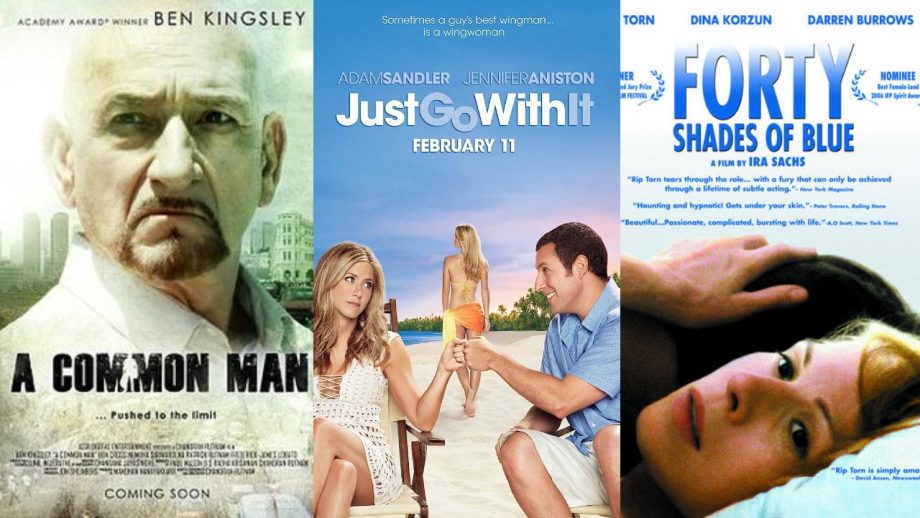In the chase of global cinema, it’s easy to fall into the trap of assuming that Western influences are the primary source of inspiration for filmmakers around the world. Hollywood, with its glitz, glamour, and gargantuan budgets, often takes centre stage, casting a shadow over the creative endeavours of other film industries. But let’s take a moment to challenge this assumption, shall we? Not all cinematic inspiration flows from West to East. In fact, there are plenty of instances where Hollywood found itself looking eastward, particularly to the vibrant world of Bollywood, for ideas and narratives. So, as we explore these intriguing cases, you might just find yourself pondering if it’s the East that occasionally influences the West, proving that the cinematic pendulum swings in both directions.
You know, it’s almost touching how Tinseltown occasionally decides to take a break from its usual diet of superhero sequels and reboots to dip its toes into the vibrant pool of Bollywood creativity. It’s like watching a fancy French chef try to recreate your grandma’s secret curry recipe – equal parts baffling and entertaining. So, buckle up, dear reader, as we thrive on a cinematic journey where Hollywood decided to do a bit of “Bollywood borrowing.”
Hold onto it; because this is going to be a Bollywood-infused, Hollywood-tinged rollercoaster of cinematic fun!
In 2005, Hollywood presented “Hitch,” a romantic comedy starring Will Smith and Eva Mendes. While the film was a fresh take on dating and love, its core concept bore striking similarities to the 1975 Bollywood classic “Chhoti Si Baat.” Both movies explore the amusing misadventures of a love-struck man seeking guidance from a professional and the comedic chaos that ensues. “Chhoti Si Baat,” directed by Basu Chatterjee, was a delightful precursor to the charming antics of “Hitch.”
Jumping back in time, we find the epic romance “Pearl Harbor” (2001), directed by Michael Bay, drawing inspiration from Raj Kapoor’s “Sangam” (1964). While “Sangam” is renowned for its timeless love triangle set against the backdrop of breathtaking locations, “Pearl Harbor” takes a similar approach but within the context of World War II. The emotional complexities of love and friendship intertwine in both films, showcasing the enduring appeal of this narrative.
In 2013, “A Common Man” graced the screens, starring Ben Kingsley as a terrorist threat expert. The gripping storyline was reminiscent of the 2008 Bollywood thriller “A Wednesday,” directed by Neeraj Pandey. Both films tackle the theme of terrorism and the moral dilemmas faced by those tasked with preventing it. The Hollywood version may have shifted the setting to Sri Lanka, but the essence of the story remained rooted in the Indian original.
For those who enjoy the comedic stylings of Adam Sandler, “Just Go With It” (2011) offers a hilarious twist on the romantic comedy genre. Interestingly, the film takes cues from the Bollywood comedy “Maine Pyaar Kyun Kiya” (2005), where Salman Khan played a doctor entangled in a web of lies and romantic entanglements. Sandler’s character adopts a similar ruse in Hawaii, and the ensuing chaos is comedy gold.
Venturing into the realm of the supernatural, “The Reincarnation of Peter Proud” (1975) finds its inspiration in the 1958 Bollywood classic “Madhumati,” directed by Bimal Roy. Both films delve into the themes of reincarnation and past-life connections, albeit in different cultural settings. “Madhumati” is celebrated for its haunting melodies and atmospheric storytelling, elements that left an indelible mark on its Hollywood counterpart.
The influence of Bollywood has extended beyond remakes to adaptations of regional films. Satyajit Ray’s Bengali masterpiece, “Charulata” (1964), found new life in the Hollywood film “Forty Shades of Blue” (2005). While the settings and cultures differ, the core of the story, centred around a woman’s longing for intellectual and emotional connection, remains a powerful and universal theme.
It’s to say that the world of film is a vibrant ballroom where partners from different corners of the globe can come together and create cinematic marvels. So, the next time you’re tempted to believe it’s a unidirectional flow from West to East, consider these compelling examples. Let’s celebrate the fact that the cinematic landscape is indeed a two-way avenue, where stories, ideas, and inspirations traverse in all directions, leaving us enchanted, moved, and in awe of the global storytelling.
Now, cue the music once more, and let’s keep the reels of cinema spinning!

